- Home
- Blog
- Carbs, Sugars and Fibres
- Are syrups better for you than sugar?
Are syrups better for you than sugar?
Written by Catherine Saxelby
on Tuesday, 31 December 2013.
Tagged: carbohydrates, carbs, glycemic index, honey, sugar, sugar substitutes, sugary drinks, sweetener

I'm often asked: is it worth swapping from sugar to an alternative sweet syrup such as honey or agave? The syrups are often pricier than sugar – think of maple syrup or agave or barley malt syrup at $9 or more for a slim 250ml bottle so do they deserve a place in your everyday eating? I thought I'd investigate 8 alternative sugar syrups to see if any would be healthier for me than ordinary sugar.
If you want other nutrients with your sweetness, a 2009 study from the University of Oslo has found that some alternative sweeteners – usually the kind you'll find in health food stores - do contain some antioxidants. For example blackstrap molasses and date sugar have the highest antioxidant value, followed by barley malt sugar and brown rice malt syrup, and then followed by dark brown sugar and maple syrup. Agave, honey and corn syrup were way down the list. There aren't many studies like this around so I'll hark back to it for reference.
The 8 sweet syrups
All the sweet syrups contain around 20 per cent water and only 70 to 85 per cent sugars so they're always going to give you fewer kilojoules (Calories) and sugars than white or raw sugar which is 100 per cent sugar (sucrose). The syrups are not straight sucrose but mixtures of glucose and fructose and sometimes other sugars, which changes the way they're absorbed.
They're often marketed as 'natural', but are not superior to sugar. Like sugar, they have kilojoules (Calories) and so they must STILL be accounted for on weight-reduction and diabetic diets. Like sugar, they too can cause tooth decay.
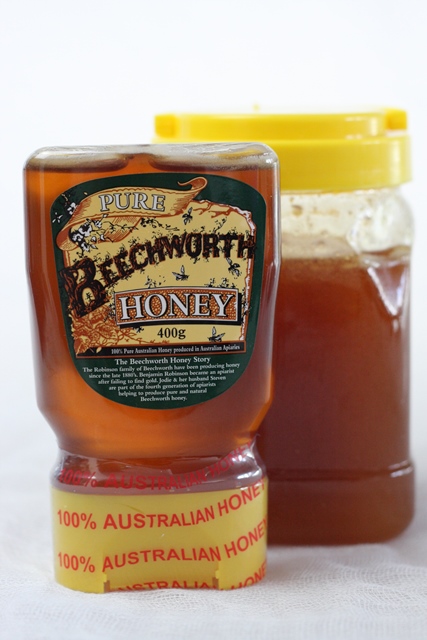 1. Honey
1. Honey
Of all eight, I like the taste of honey the best. It's sweet, perfumed and heavenly. And it stacks up the best nutritionally - but this depends on the type of honey e.g. floral, Manuka.
Honey contains some B vitamins and minerals but the quantities are tiny and not significant nutritionally – you would have to consume enormous amounts of honey to obtain the same as from whole grains.
Most commercial honey has a moderate Glycemic Index or GI of 50-65 although there is great variation e.g. floral honeys like Yellowbox and Ironwood have lower GIs. Note: white sugar has a GI of 65.
2. Maple syrup
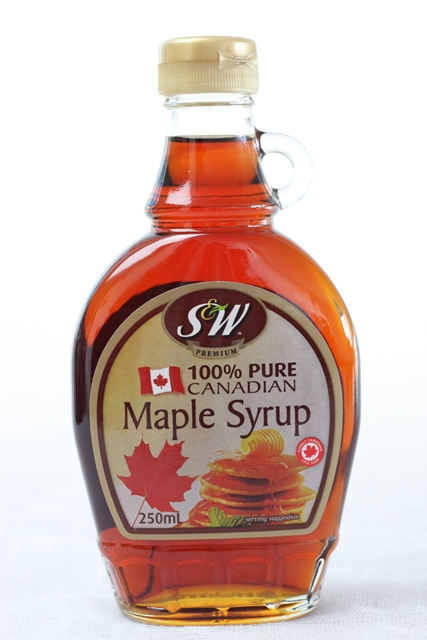
The sap that exudes from the tree is boiled to reduce it to make the sweet maple syrup. The label should simply say "100% pure maple syrup".
Make sure you buy the expensive 100% Canadian maple syrup, not the cheaper maple-flavoured syrup which has an inferior flavour and is made from a nasty mix of sugar, corn syrup, molasses, caramel colour, alcohol, vanilla extract, flavours and a sulphite-based preservative.
GI of 54 Medium-Low.
3. Agave syrup
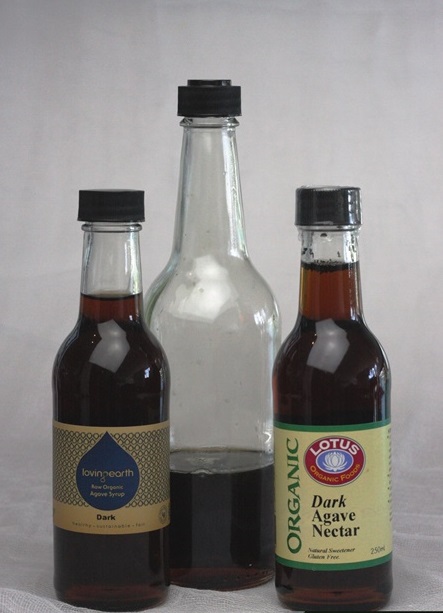
Thanks to its fructose, agave syrup is about 1.5 times sweeter than table sugar and it has a much lower GI (Glycemic Index). However it is this high fructose content that means it can be a cause of digestive problems for some people.
It is often claimed to be a healthier alternative to sugar but the way I see it, agave syrup is still refined and no more healthy than maple syrup or golden syrup. Both still contain around the same level of sugars and have gone through a similar process of filtering, boiling and reduction.
The University of Oslo research rated it as no healthier than white sugar. It has a similar runny consistency to maple syrup and I enjoy its caramel overtones. Here's what I've written about agave already.
GI of 15 Very Low.
Three cane sugar syrups:
 4. Golden syrup
4. Golden syrup
Golden syrup is derived from molasses, the residual syrup left over from the milling of sugar cane. It is a mix of three sugars – sucrose, glucose and fructose – but because it contains more water and less sucrose than white table sugar, it is not as sweet. It is a concentrated sugar syrup with a distinctive flavour and golden colour. I've had a jar in my kitchen for years - I only use it to make Anzac biscuits every once in a while and for adding moistness to my Christmas cake.
GI of 60 Medium.
5. Treacle
Treacle is a viscous, dark-brown liquid that has a stronger flavour and aroma than golden syrup. Like golden syrup, some of the sucrose sugar is broken down to its glucose and fructose components during production. This process stops crystals from forming and thus creates a stable liquid product. Treacle may be light or dark in colour (sometimes referred to as blackstrap molasses).
GI of 60 Medium (same as golden syrup).
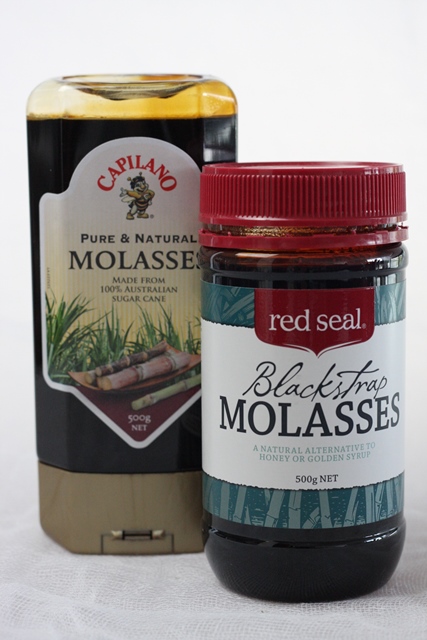 6. Molasses
6. Molasses
Molasses is a dark, sticky liquid which is the syrup left behind after the raw sugar crystallises during sugar milling. It's a mixture of 36-38 per cent sucrose, 10-13 per cent glucose and fructose and 24-30 per cent water. It also has a few minerals such as magnesium and potassium and traces of B vitamins. Blackstrap molasses has been promoted as a 'health food' but the quantities of B vitamins present are very small. It doesn't deserve the reverence it's often given in my opinion. It tastes very strong and not terribly sweet nor attractive. Surprisingly it has a higher sodium (salt) content which contributes to its not-so-nice flavour.
GI of 55-60 Medium (around the same as golden syrup).
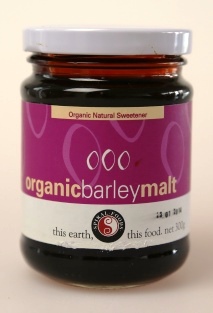 7. Barley malt syrup
7. Barley malt syrup
Barley malt syrup (also known as malt extract or simply malt) is made from sprouted barley. Barley grains are steeped in water, heated gently and left to sprout, which triggers enzymes that convert barley's starches into sugars, and its proteins into amino acids. Then it's mixed with water, boiled, concentrated and filtered so the sugary syrup can be extracted.
This creates a dark-brown, thick and sticky syrup with a distinctive malty flavour. It is about half as sweet as refined white sugar so you may be tempted to add more to get the sweetness you're after. In flavour, I liken it to dark treacle or molasses. It's great for baking bread – you may have read BARLEY MALT on the ingredient list of breads where it's used as a yeast food. As expected, of its sugars, it contains about 75 per cent maltose, 16 per cent glucose, with tiny amounts of sucrose and fructose.
GI of 98
Source: GI website. So its almost the same as glucose at 100. Some sites incorrectly list this as 42.
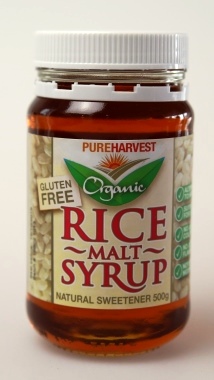 8. Brown rice malt syrup
8. Brown rice malt syrup
Brown rice malt syrup is a sweetener that looks similar to molasses – think thick and dark – but with a better taste more akin to barley malt syrup or strong honey. It is produced commercially by cooking brown rice flour or brown rice starch with enzymes. This breaks down the starches into simpler sugars as a liquid. The syrup is filtered and reduced by heating it until the desired consistency is reached and excess water is evaporated.
The sugars in the final product are 45 per cent maltose, 52 per cent maltotriose (a triple sugar) plus a tiny 3 per cent glucose. It can be used in the same way as molasses.
GI of 98 Very high (Source: GI website. Note some sites have this listed incorrectly with a very low GI)
Kilojoules, sugars, GI and fructose in 100 grams of syrups
| Syrup |
kilojoules |
Sugars |
GI |
Fructose |
| Honey | 1400 | 82 | 50-65 | 38 |
| Maple | 1500 | 88 | 54 | 1-10 |
| Agave | 1300 | 74 | 15 | 47-56 |
| Golden | 1260 | 74 | 60 | NA |
| Treacle | 1210 | 71 | 60 | NA |
| Molasses | 1220 | 74 | 55 | 24-30 |
| Blackstrap molasses | 1025 | 51 | 55 | NA |
| Barley malt | 1220 | 70 | 98 | Low |
| Brown rice | 1370 | 80 | 98 | Low |
| Sucrose/white sugar | 1700 | 100 | 65 | 50 |
Source: manufacturers data with GI from the website http://www.sugar-and-sweetener-guide.com and Syd Uni GI Database. To obtain calories, divide kilojoules by 4.2 or just 4. NA means "Not available" so the figures are not yet published or are not reliable enough to quote. Figures have been rounded off for ease of reading.
Bottom line
When I want something sweet and syrupy, my preference is for honey, followed by agave and golden syrup. They each add an interesting sweetness and enhance the appeal of my wholegrain toast or morning oats or dessert recipe.
However they can't replace sugar in all culinary situations eg baking and they still add carbs in the form of sugars and of course kilojoules or calories. Plus they perpetuate a liking for a sweet taste.
- There's nothing special nutritionally about any of these syrups even though they're often billed as 'natural'.
- They're all similar in terms of sugars and kilojoules and I don't regard any of them as superior to white sugar. They're all made by extracting and then boiling off the water to reduce and concentrate the natural sugars in the sap or sprouted extract.
- They are mixtures of glucose plus fructose with a little sucrose but with very little in the way of vitamins, minerals or other beneficial components. Think of the syrups as 'enhancers' of fruit, yoghurt, milk or whole grains rather than foods in their own right.
- One level tablespoon (30 g/1 oz) of honey or the sugar syrups has approx. 360 kilojoules (85 Calories)
Remember it's NOT the sugar or syrup that WE add ourselves that's the main problem. Most of the sugar we eat comes from ready-made and processed foods, many of which, like doughnuts, cakes, muffins, chocolate and fancy ice creams, also come bundled with saturated fat and refined starches plus additives.
Soft drink, cordials and juices are the biggest source of added sugar. Unlike a spoon of sugar on porridge or jam on wholegrain bread which make healthy-low-GI-high-fibre-foods taste good, drinks just 'dump' a load of carbs and kilojoules in your system without any other nutrients. They are a real problem.
Reference: Phillips KM, Carlsen MH, Blomhoff R. Total antioxidant content of alternatives to refined sugar. J Am Diet Assoc. 2009; 109(1):64-71.
You may also be interested in...
Foodwatch
The Good Stuff
The Boring Stuff
© 2025 Foodwatch Australia. All rights reserved
Website by Joomstore eCommerce









